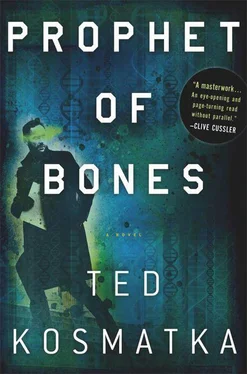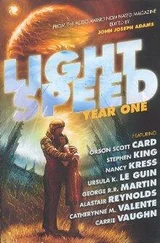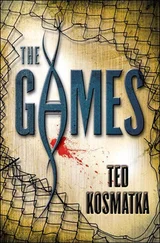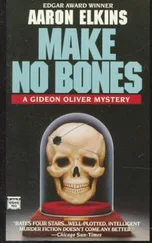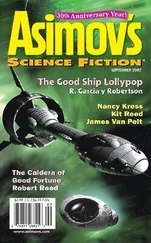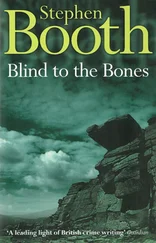Waiting.
Waiting for the Hallmark cards to stop, sent in pastel envelopes. Waiting for an end to the phone calls. To the well-wishers, and drop-ins, and long-time-no-sees.
They’d come to his office to shake his hand, saying how happy they were to have him back. Makato had brought him a gift, a small bamboo plant grown in a tight spiral. They said how sorry they were to hear about his injury. That’s what they called it, most of them: his injury. Only Hongbin had called it his eye, saying, “Seriously, chicks dig pirates.”
Paul had smiled at that one. Hongbin.
Hongbin, square and muscular, raised outside San Diego by doctor parents. He was so thoroughly American that he didn’t feel the need to Johnny up his name. Perhaps when he was younger he’d done it. Perhaps he’d gone by Henry, or Harry, or Benny. But not now. He was just Hongbin.
Paul accepted the cards and gifts. He waited to blend in again, to become part of the wallpaper.
News of what happened had preceded him—a story as communicable as any virus, passed by casual contact. He learned that people had heard there’d been a robbery in Indonesia, a break-in at the hotel, and things had gone badly somehow. He learned that people thought there’d been a struggle and a researcher had died. He learned that people thought the police had killed the assailant. Perhaps Westing had come up with the story, or perhaps the story had written itself, precipitated itself from the soluble facts—and become what it was, a thing so logical and reasonable that of course it must have happened that way. Of course.
And Paul said nothing to contradict the accepted version. It was easier to let it pass. Perhaps there need be no grand conspiracies in the world. Perhaps in this simple way are the world’s secrets hidden.
Paul nodded and said all the right things.
“I’m fine,” he told them when they came in to see him. “I’ll be fine. Thank you.”
And he waited for his chance.
Brandon from the second floor had stopped by his office one afternoon, and they’d talked about sports, because talking about sports felt normal and familiar. It was a comforting script, and they both had their lines.
“The Patriots,” Brandon said. “I’ve got a feeling.”
Paul nodded. “Could be.”
“Yeah, this is the year,” Brandon said. “I’m telling you. They’re due.”
And they could both pretend for a minute that maybe it worked that way.
Paul finished rearranging his shoelaces and stood. He headed for the stairs, glancing behind himself to see if anyone had noticed.
Most of the third floor belonged to the osteo lab. On the second floor were the tech offices and the storage vaults, along with the secretaries, the conference rooms, and the computer specialists.
But the fourth floor belonged to DNA. It was its own fiefdom.
Paul took the stairs up and pushed through to the fourth floor. He nodded to a researcher whose name he didn’t know. The woman gave him an odd look but said nothing.
He walked the halls, refamiliarizing himself with the layout, counting the doors and exits, noting the badge swipes. The fourth floor had a ring-in-ring configuration, and his current badge got him only to the outer circle. The inner sanctum was out of reach.
He took the stairs back down.
* * *
Paul passed his days in a blur of busy, solitary work. He categorized the incoming bones and readied samples for the DNA analysis that would be performed on the fourth floor. He took photographs and made up specialized mulches.
Preparing a sample for testing required destruction of existing material, a small portion of bone. It was a solemn event. What was destroyed could never be brought back, so you had to be sure that what you’d learn was worth the cost. All knowledge requires some sacrifice.
Paul pulverized bone into a fine powder, to which a special solvent was applied over low heat, and then this slurry was injected into the sterile lozenges for preservation. The lozenges were then taken to the fourth floor, where the DNA samples were extracted and tests performed.
He did his job the way he’d always done it. It came easy to him.
If you stare at bone long enough, you come to appreciate its solidity. Its material constancy. For most aspects of living organisms, phenotype is a maddening blur—things like hair color, skin color, weight, muscle mass. All difficult to quantify and subject to change. Subject to health and age, and season, and nutrition. Subject to being alive. Not so with bone.
Bone is resistant to the world’s exigencies.
People less so.
In the evenings, Paul drove home in the dying light, fighting traffic on the Francis Scott Key Bridge. When he arrived at his apartment, he watered his plants, which, except for the spiral bamboo, were all well and truly dead. But he watered them anyway.
Each night he looked at himself in the bathroom mirror. He would take off his eye patch and study the scar. He’d look into the smoky ghost eye. “I am less,” he said once, and this gave him pause. That he’d said it.
Each night he’d open his medicine cabinet. He would unscrew the top of the plastic bottle and look at the sample.
He arrived at the lab early one morning, before the rush of the other researchers and techs. In his office, he leaned back in his leather swivel chair, fingers laced behind his head.
He looked up and saw a face hidden in the grooves and notches of the acoustical ceiling tiles. He saw it clear as day: a nose here, the curve of a lip—and there, two shadowy eyes looking down. Depending on how he interpreted the lower lip, the face could almost seem to be smiling.
He looked at it for a long while, wondering how he could have been in this office for nearly three years and never noticed it, never sensed that face gazing down at him.
He shut his eye for a moment, willing the image away. When he opened his eye again, the face was gone. The grooves were still there. The textures. But they were just textures now and nothing more. A swirl without pattern.
He concentrated. He tried to see the face again but couldn’t. No matter how hard he tried, he could assemble nothing from it.
That was happiness. Something you see for a moment.
* * *
The next afternoon, a new shipment of bones arrived, packed in green foam. Hongbin wheeled the samples in on a small metal cart. The label read XTN-2421. They could have been from anywhere, a series of small bone dissections completely lacking in morphological detail.
Paul crossed the room and grabbed his safety glasses, preparing for the procedure ahead. He adjusted the straps so that the glasses fit his face. Behind him, Hongbin started dividing the samples into two equal sets. Paul approached the counter and picked up the pestle. Working with bone meant working with your hands. He placed one small bone dissection into the mortar. In the early days of DNA extraction, they’d used drills for this kind of work. Most bones, the scientists had found, were barren of DNA. At speeds above 260 revolutions per minute, heat from the drill bit denatures protein structure. In trying to extract DNA, they’d destroyed it.
Paul applied the pestle, grinding the sample to a fine powder.
If you worked in bones long enough, you could be promoted to the fourth floor. But Paul had never wanted that. He’d never craved advancement.
Paul was a bone man. A field man. A necessary evil. The gene freaks knew him by his nucleotide base-pair sequence.
“Pestle,” Hongbin said.
Paul passed Hongbin the pestle and started prep on the next sample. They took turns.
Everybody who set foot above the second floor had to be genotyped. It was the only way to publish in the hypercompetitive world of human genomics. You had to be able to prove you’d eliminated all sources of contamination, and having a walking, talking unmapped DNA factory wandering around your clean room was not acceptable. Until you genotyped everyone, it was like taking water samples in the rain. You couldn’t be sure what you were testing.
Читать дальше
